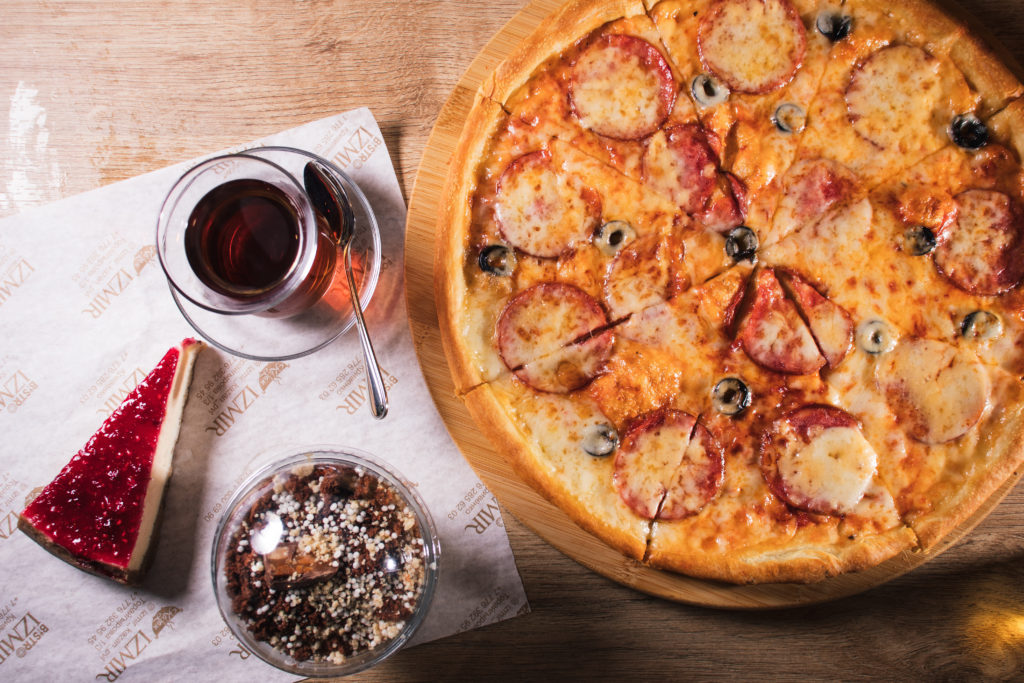Too often we are told we need to cut out all of our favorite foods in order to lose weight. Trainers will have you on an unsustainable diet regime where you can’t eat any tasty foods! You will waste precious time struggling to lose weight with unfulfilling results and your taste buds will be suffering in the process. I am here to tell you that couldn’t be further from the truth!
While it is advised to eat as healthily as possible while losing weight, it is in no way essential and may actually be more difficult for many people. Oftentimes when switching from a poor diet to a healthier one, you may end up eating much less than you are used to.
Coupled with poor meal programming, this quickly becomes a recipe for disaster! You may begin to experience uncomfortable side effects like severe hunger and headaches.
Caloric Defecit
If you are unfamiliar with the caloric and nutrient contents of food, it can be difficult to understand how much food is actually necessary to lose weight. In most scenarios you will be eating more or less than you realize.
To lose weight you must be in what is called a caloric deficit. This means to be consuming less calories than you burn each day.
This is a required process when losing weight. But eating any less than what is required to lose weight can have a huge impact on how you feel.
When you eat less than what is required to lose weight, your body lowers its energy expenditure to save energy. This means that in order to make up for the lost calories, your body will slow its normal processes to save energy. Not only will you be left feeling tired all the time and craving food more than ever, but your but will try to hold on to your extra fat making it more difficult to lose weight.
It is not an effective way to lose weight and will end up making the process even more difficult. That is why it is important to find out exactly how much you need to eat and how much you currently are eating.
TDEE
The first step is to figure out your Total Daily Energy Expenditure (TDEE). Your TDEE tells you the number of calories you require each day to maintain your current weight.
Using a calculator online, you are able to calculate your TDEE based on your height, weight and activity level. This number may lower as you lose weight so it is important to recalculate as your weight loss begins to slow down.
You will then subtract between 250 and 1000 from that number. This is because 1lb is equal to 3500 calories. So if you split that up into 7 days that would be 500 calories a day.
When you subtract that 500 from your TDEE you are left with the number of calories you need to eat each day to lose 1lb a week. Subtracting 250 would have you lose .5lbs a week. Subtracting 1000 a day would have you lose 2lbs a week.
It is not recommended to go over that number unless advised by a doctor. Doing so may cause serious negative side effects including fatigue and muscle loss.
Understanding this, you will know that no matter what kind of food you eat, you WILL lose weight if you eat the correct amount of calories. This is the basis of weight loss. You can eat junk food all day long and as long as you stop at that number, you will lose weight. That doesn’t mean it is healthy to do so, but it can be done.
Macronutrients
What you also have to take into consideration is something called macronutrients.
Macronutrients are what make up the calories in your food. They consist of protein,carbohydrates, and fats. Protein and carbohydrates make up 4 calories per gram while fats make up 9 calories per gram.
To healthily lose weight it is important to hit a certain amount of these numbers per day. Generally, you would like to aim for 1 gram of protein per pound of lean body mass, carbohydrates will consist of 40-65% of your calories, and fats will be 30-40%. These numbers may vary person to person depending on specific needs.
Micronutrients
Another thing you must take into consideration is micronutrients. Micronutrients are the vitamins and minerals in food. Each micronutrient has a recommended daily allowance (RDA) based on age, gender, and other lifestyle factors.
To avoid any deficiencies, it is important to eat a wide variety of foods including fruits, vegetables, complex carbohydrates, healthy fats, and whole proteins. Supplementation like a multivitamin will help ensure you do develop any nutrient deficiencies.
An important step in this process is to figure out the macronutrient, micronutrient, and calorie contents of the food you eat. Doing so will help you determine how much of what foods you need each day. This information is found on the labels of almost every food product. Information on fresh produce without labels can be found online.
If you can figure out all of these numbers, you will be able to understand that you need to eat a certain amount of healthy food each day. Once you have done that, then you can fill your belly up with your favorite treats while still losing weight!
The Bottom Line
I know how complicated this all may sound but once you spend some time practicing it is actually quite simple. If you do not feel like figuring all of this out, we provide health and wellness consulting services to anyone who may be interested.
We will help you figure out all of the calculations mentioned in this article, as well as a specific diet plan tailored to your wants and needs! I provide a free one hour consultation for anyone interested. This way you won’t have to give up pizza, cake, and all your favorite snacks while still losing weight!




